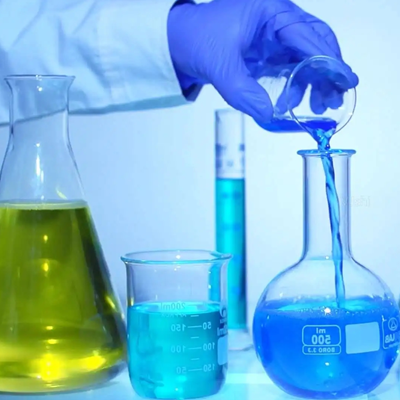Introduction of phosphate and borate flame retardants
Inorganic phosphates and borates are common raw materials in halogen-free flame retardants, and the more representative ones are red phosphorus, aluminum hypophosphite, ammonium polyphosphate, zinc borate, aluminum phosphite and so on. Generally, the use of compounding is better than the use of separate effect, phosphate and borate flame retardants through the surface modification, compounding and other technologies, can greatly enhance the flame retardant effect. Here we introduce from several aspects.
1, phosphate flame retardant
(1) phosphate flame retardants mainly include red phosphorus, phosphate and ammonium polyphosphate, of which more research and application for red phosphorus, aluminum hypophosphite, ammonium polyphosphate. Red phosphorus is a flame retardant with excellent performance, with high efficiency, smoke suppression, low toxicity of the flame retardant effect, but in practical application is easy to absorb moisture, oxidation, and release toxic gases, dust is easy to explode, and was deep red, in the mixing of resins, molding, and other processing operations there is a risk of fire, and poor compatibility with the resin is not easy to disperse uniformly, resulting in the decline of physical properties of the substrate. Therefore, its use is greatly restricted. After modification and surface treatment of red phosphorus, such as adding metal powder (aluminum, zinc, etc.) or aluminum hydroxide, zinc hydroxide, etc. in red phosphorus can inhibit its oxidation rate: the use of silver nitrate, mercuric chloride, activated carbon, copper oxide, etc. can capture phosphine, thus solving the toxicity of red phosphorus flame-retardant thermoplastic; paraffinic acid oil, chlorinated paraffin, silicone, etc. added to red phosphorus, can reduce dust.
(2) The microencapsulation technology of red phosphorus is an effective method of surface treatment, and its preparation method is to subdivide the liquid, solid or gaseous capsule-centered substances into fine particles, and then take these particles as the core, so that the polymer film-forming material deposits coatings on them to form a thin film, which will encapsulate the capsule-centered particles. As microcapsules can protect substances from environmental influences, change the weight, state or surface properties of substances, isolate active ingredients, reduce volatility and toxicity and many other roles, so the application of this technology to inorganic flame retardants, you can prevent the migration of inorganic flame retardants, improve flame retardant effect, improve thermal stability and so on. At present, the industrialized application of microencapsulation technology in inorganic flame retardants is mainly microencapsulated red phosphorus. The encapsulated red phosphorus is characterized by low smoke, low toxicity, non-halogen, good compatibility and excellent physical and chemical properties. The flame retardant effect of ultrafine red phosphorus microencapsulated flame retardant on cotton fabrics reaches Class A standard.
Domestic generally use aluminum hydroxide metal sulfate, synthetic resin for wrapping wall material, but the domestic market is not widely used. The future development direction of red phosphorus surface treatment should be:
① Develop multifunctionalized microencapsulated red phosphorus flame retardant by modifying the wrapped capsule material to make it both heat stabilized, plasticized and flame retardant at the same time;
② Study the effective compounding relationship between various flame retardants and red phosphorus flame retardant, and make it microencapsulated to increase the flame retardant effect and improve the mechanical properties of the material;
③ As red phosphorus has smoke suppression effect, we can find suitable smoke suppressant to compound with it, because smoke suppression is more important than fire prevention in fire, and promote the development of smoke suppression technology.
2, Borate flame retardants
Borate series products are also a commonly used inorganic flame retardants, ammonium metaborate, ammonium pentaborate, sodium metaborate, ammonium fluoroborate, barium metaborate, zinc borate. At present, the main use of zinc borate products, 3.5 water zinc borate as a flame retardant material gradually in various industrialized countries have been applied, has a good market prospect. According to the composition of different, zinc borate flame retardant has more than a dozen varieties, and low water zinc borate is a solid inorganic flame retardant with excellent performance, chemical formula 2ZnO-3B203-3.5H20, white crystalline powder, melting point of 900 ℃. Zinc borate has a very good flame retardant and smoke suppression, in 300 ℃ began to release the water of crystallization in the presence of halogenated compounds, generating boron halides, zinc halide. Inhibition and capture of free hydroxyl, preventing combustion chain reaction; at the same time the formation of solid-phase cover layer, isolate the surface air of the combustibles, preventing the flame from continuing to burn and can play the role of smoke suppression and arc extinguishing.
3.5 water zinc borate industry, there are mainly three kinds of synthesis route:
(1) zinc hydroxide - boric acid method
This method produces a single product, no three-waste pollution, high utilization of boric acid, but Zn (OH), on-site preparation will produce by-products and wastewater, and boric acid is more expensive, higher production costs;
(2) Zinc oxide - boric acid method
This method is simple process, single product, no three waste pollution, mother liquor can be recycled, zinc oxide, boric acid is more expensive, high production costs, lack of market competitiveness;
(3) Zinc salt - borax method
Using borax and cheap zinc salt, lower cost.
Zinc borate flame retardant is seldom used alone, generally with antimony oxide and then with halogenated flame retardants and use. Zinc borate and antimony oxide ratio of up to 50:50. zinc borate another advantage is that it is above 482 ℃, and aluminum hydroxide, will decompose to generate coatings, this coating layer can be used as an electrical insulator and insulator, and can make the conductor to keep the original unchanged, thus greatly increasing its application in the wire, cable. Zinc borate can replace the toxic antimony oxide in a variety of synthetic materials, while zinc borate can also be used as a fire-resistant additive for coatings and wood, textile materials, such as fire-resistant additives.
 Aluminum Diethylphosphonate(AD
Aluminum Diethylphosphonate(AD
 The Role and Application of Po
The Role and Application of Po
 How to Identify the Quality of
How to Identify the Quality of
 The Reduction Mechanism of Sod
The Reduction Mechanism of Sod


